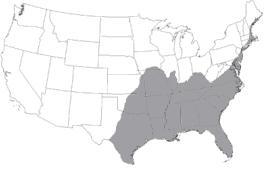Tick species that transmit STARI: Lone Star tick (Amblyomma americanum)
What is STARI?
Southern Tick Associated Rash Illness (STARI), also known as Masters disease, occurs after the bite of the lone star tick, Amblyomma americanum. The disease is thought to be caused by the bacterium Borrelia lonestari. However, this hypothesis is based on a single case of B. lonestari infection in a STARI patient. No other report has confirmed B. lonestari infection in a suspected STARI patient. Borrelia burgdorferi (the causative agent of Lyme disease) has been ruled out as the cause of STARI because lone star ticks do not transmit B. burgdorferi.
Early STARI symptoms are similar to symptoms of early Lyme disease (LD). A skin lesion (or rash) that looks like a Lyme disease erythema migrans (EM) appears at the site of the tick bite. Treatment with an antibiotic regimen similar to that used for LD helps resolve STARI. In some patients, STARI resolves on its own without antibiotic treatment.
Where is STARI Prevalent?
The lone star tick is found in southern states as well as along the East coast up to Maine (see map below). Cases of STARI are most common in the south, although cases have been reported as far north as New Jersey. It is highly likely that cases of STARI have been mistaken for LD due to similarities in symptomology.
U.S. Distribution of Lone Star Ticks

Image Source: The Centers of Disease control and Prevention, redrawn and updated from Hair and Bowman, 1986.
Symptoms
STARI symptoms are similar to early LD symptoms. STARI lesions often appear at the site of the tick bite. The most common symptom reported by STARI patients with skin lesions is fatigue.
A study in Clinical Infectious Diseases reports that there are some very subtle differences between STARI and LD. STARI patients with skin lesions are less likely to report symptoms that commonly accompany LD. STARI lesions are typically smaller in diameter and tend to have central clearing (bull’s-eye appearance) more often than EM lesions.
Diagnosis
Serologic testing for LD antibodies in STARI patients is not helpful because STARI is not caused by B. burgdorferi (the causative agent of LD). The Centers for Disease Control and Prevention recommends that patients with an expanding rash and recent history of exposure to the lone star tick see a physician.
Treatment
Patients suspected of having STARI seem to respond well to a treatment regimen similar to that used for LD (see Table of Recommended Antibiotics and Dosages).

